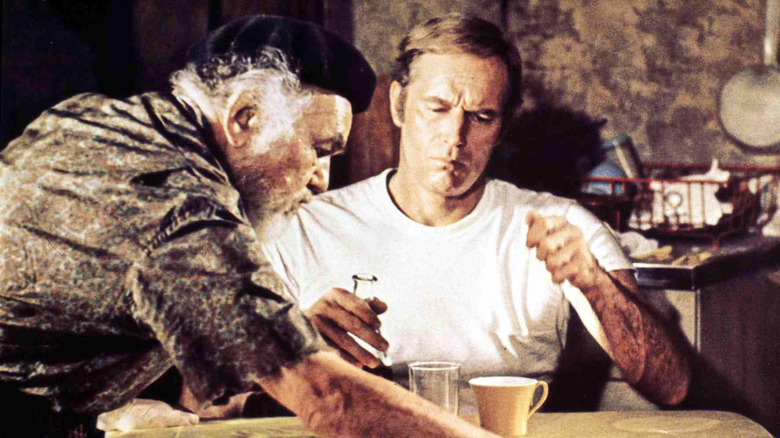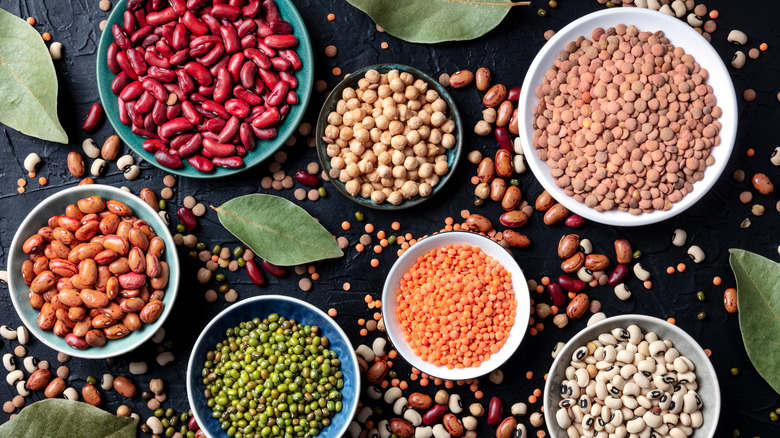The 2 Foods Soylent Green Was Named After
Back in 2013, four Silicon Valley software engineers had a thought — what if they could reap all the benefits of a well-rounded, nutritional diet, without ever having to cook another meal? After subsisting on a diet of ramen noodles and frozen dinners for too long, Soylent founders Rob Rhinehart, Matt Cauble, John Coogan, and David Renteln decided to engineer plant-based, innovative meals that were healthy, sustainable, and delivered all the necessary required daily nutrition, without the hassle of meal prep or the high cost of a monthly grocery bill, according to Soylent's website. After a successful crowdfunding campaign, they launched the company Soylent Nutrition, Inc. in 2014.
The meal replacement company named their newly engineered ready-to-drink meal Soylent, in a clever nod to Harry Harrison's 1966 dystopian science fiction novel "Make Room! Make Room!" and the 1973 movie adaptation "Soylent Green." True sci-fi fans probably already got the inside joke, but those who weren't familiar with the film might have had to do some digging to understand the interesting name.
"Soylent" is a combination of "soy" and "lentil"
In "Soylent Green," the term "soylent" refers to a brand of synthetic food replacements that have become a necessity after overpopulation, ecological disasters, climate change, and depleted resources led to a lack of real food sources like meat, fruits, and vegetables. The wafers, manufactured by the powerful company Soylent Industries, include "Soylent Red," "Soylent Yellow," and the most recent release "Soylent Green." The name is derived from a combination of the words "soy" and "lentil," according to Slideshow, but this name is misleading, since the earth's ecosystem is no longer able to support the growing of real plants. Of the three, Soylent Green is the most nutritious and flavorful, supposedly because it is made from ocean plankton, but it is also the most scarce.
As the film goes on, the horrifying truth is eventually revealed: it turns out that the protein-rich meal replacement is not made from plants or plankton at all. Instead, Soylent Green is — spoiler alert — really made out of people.

